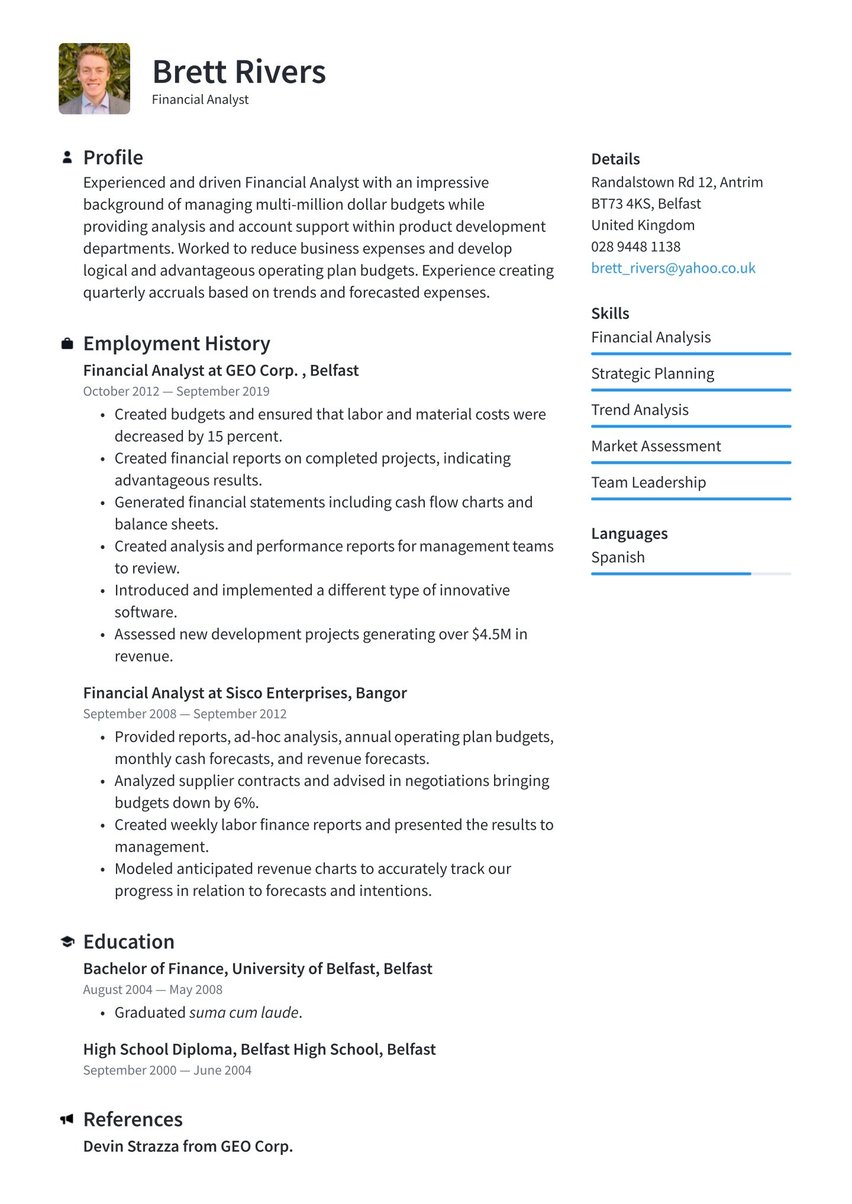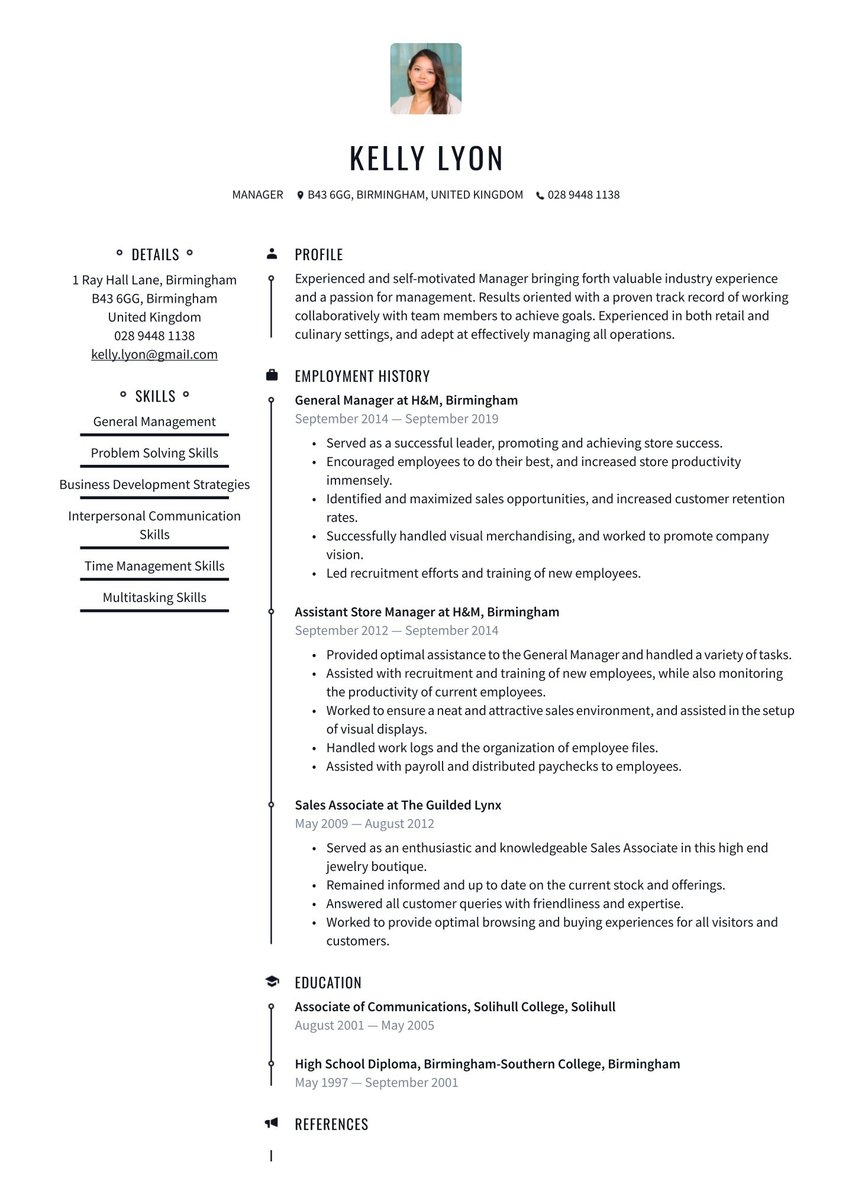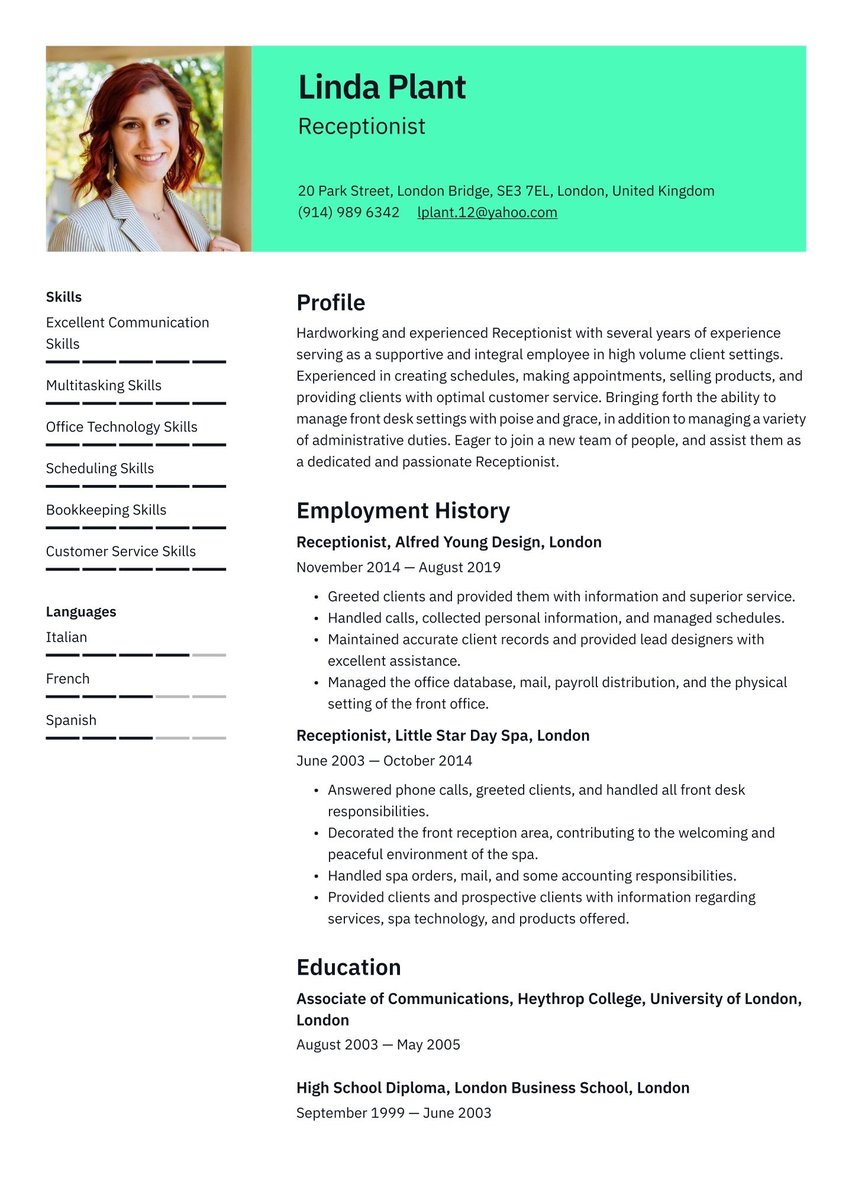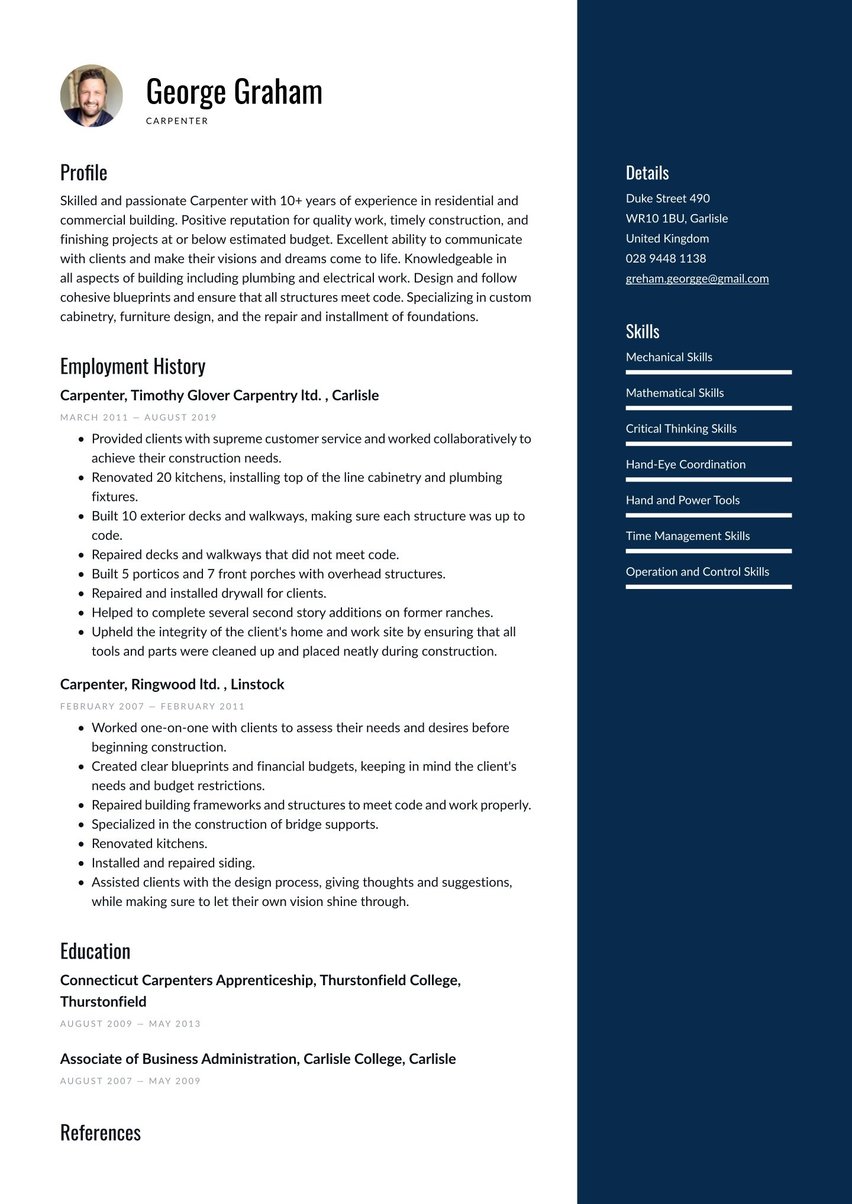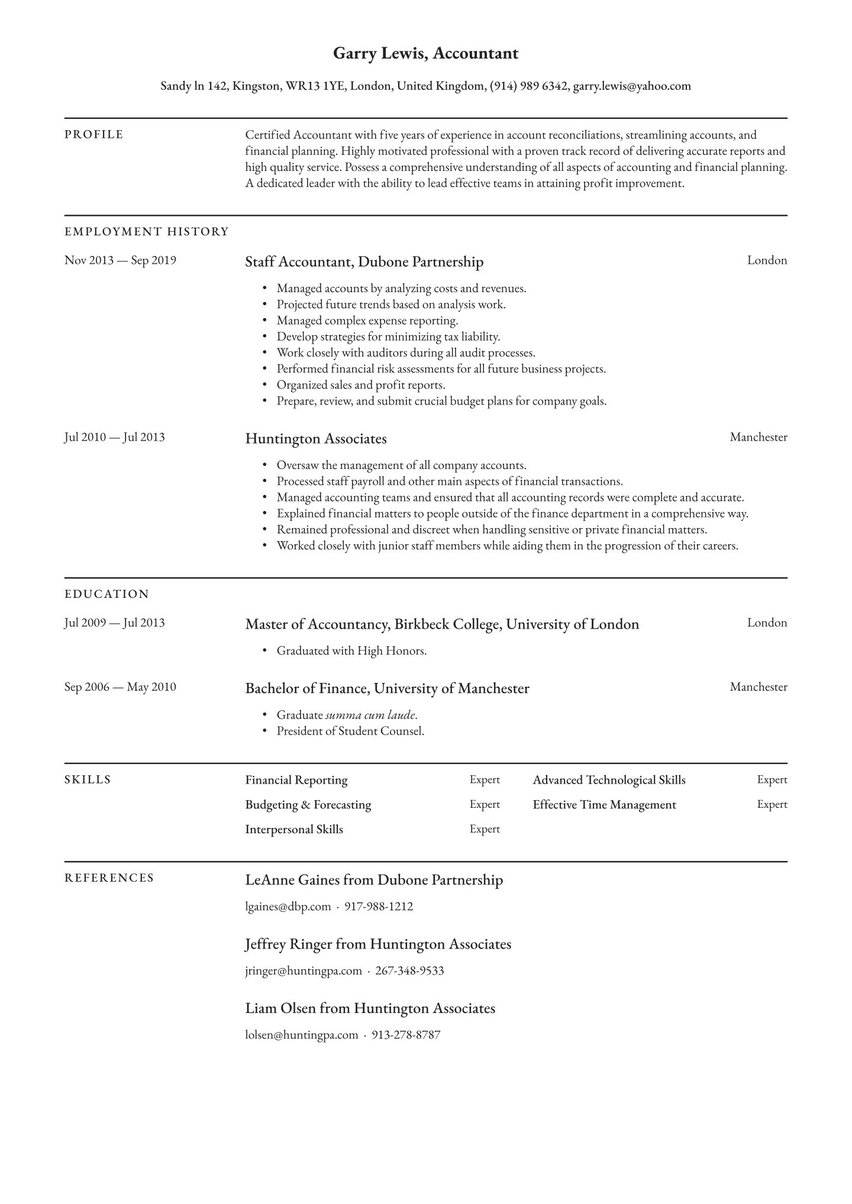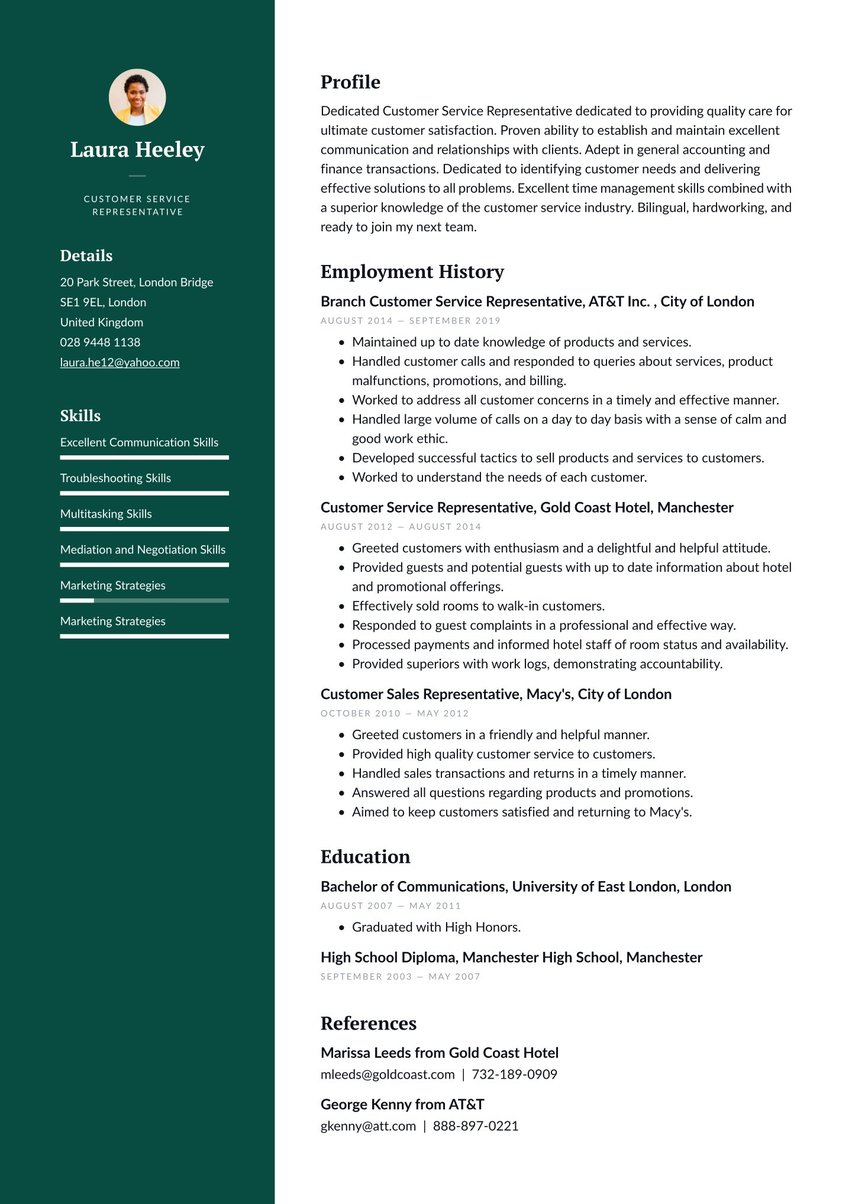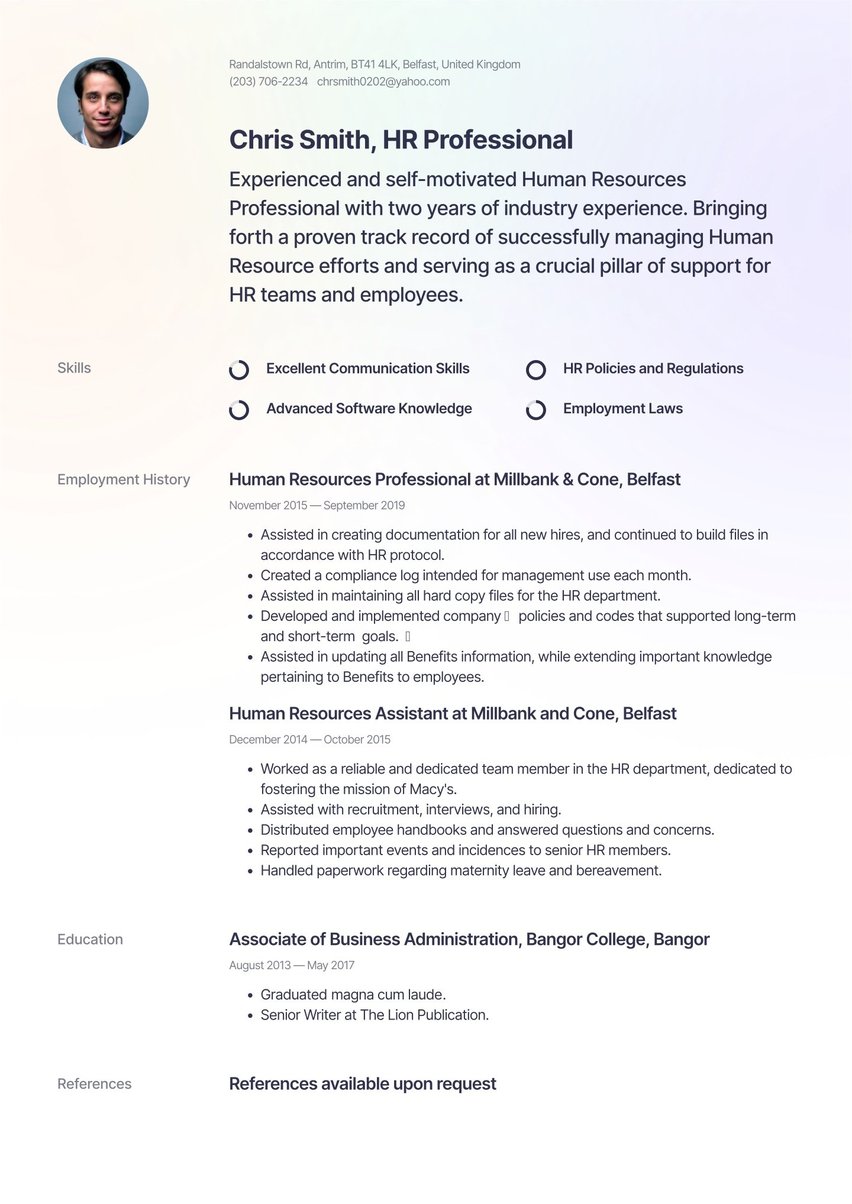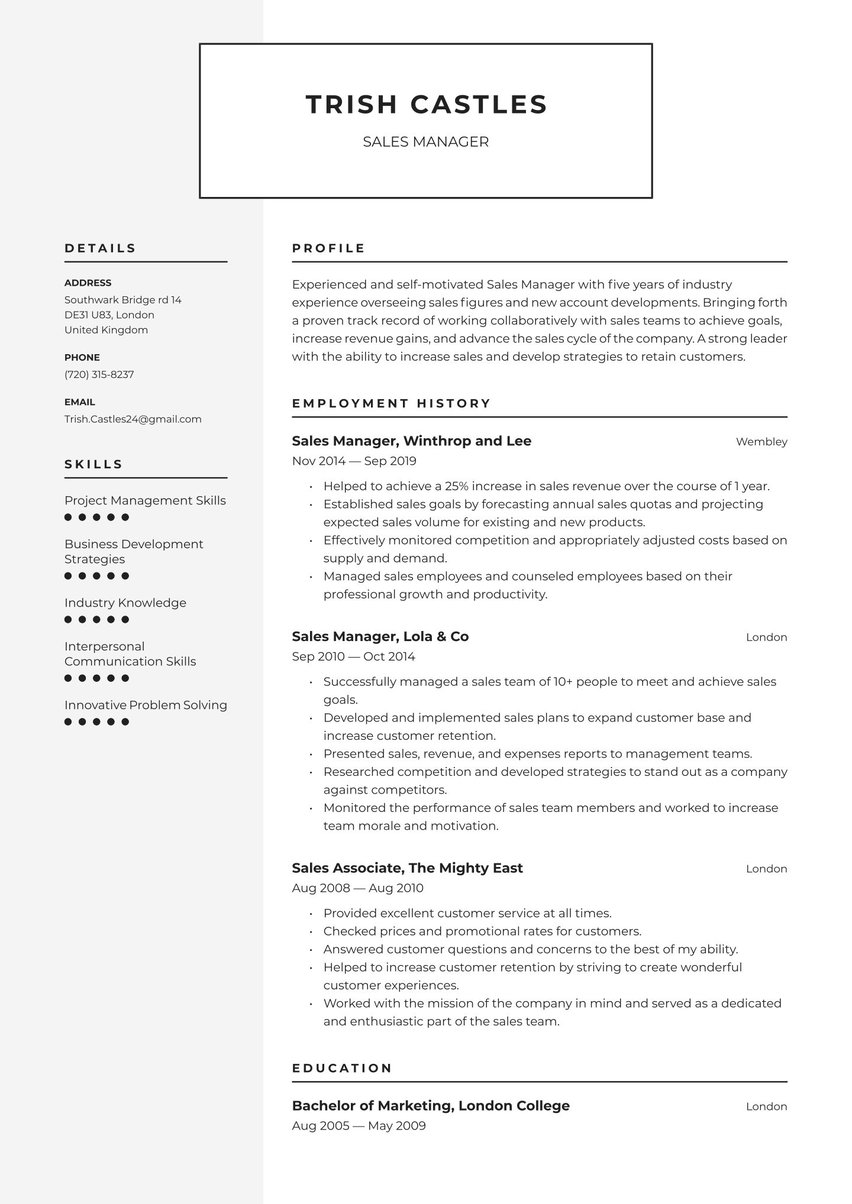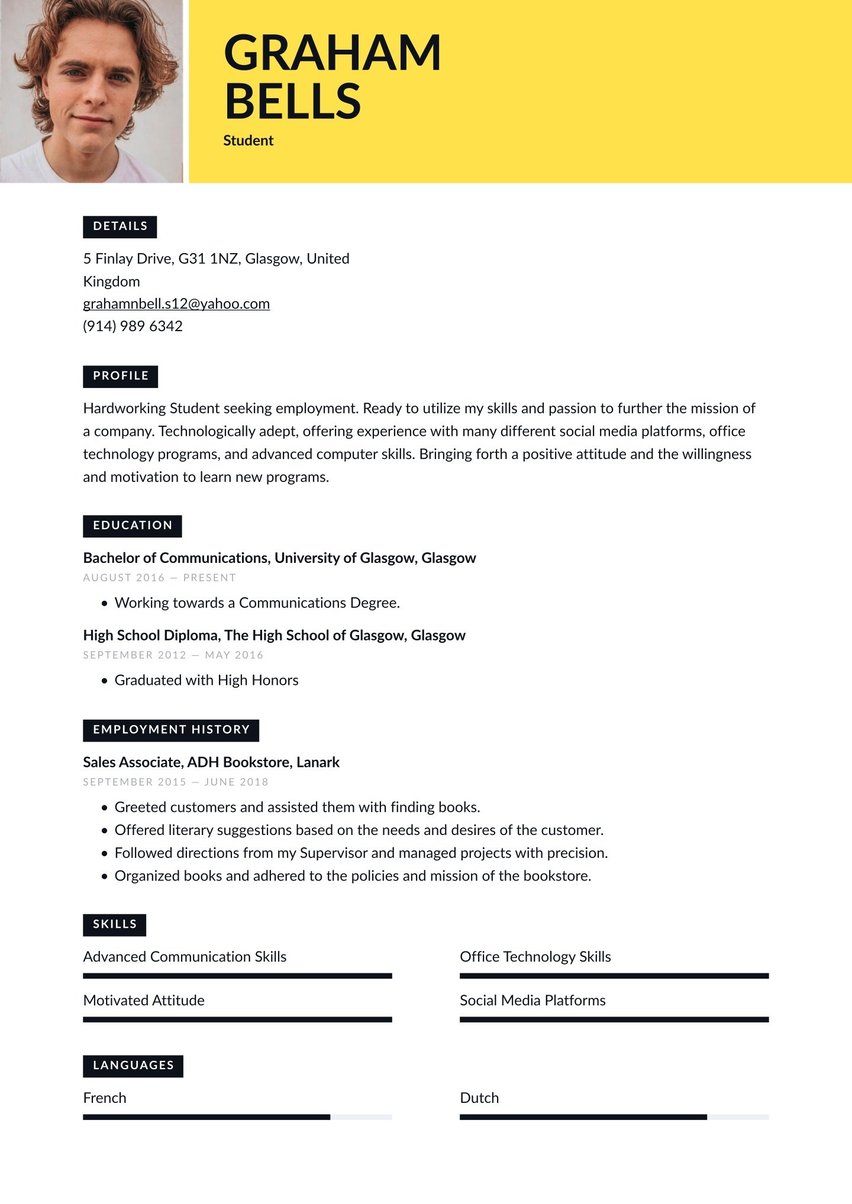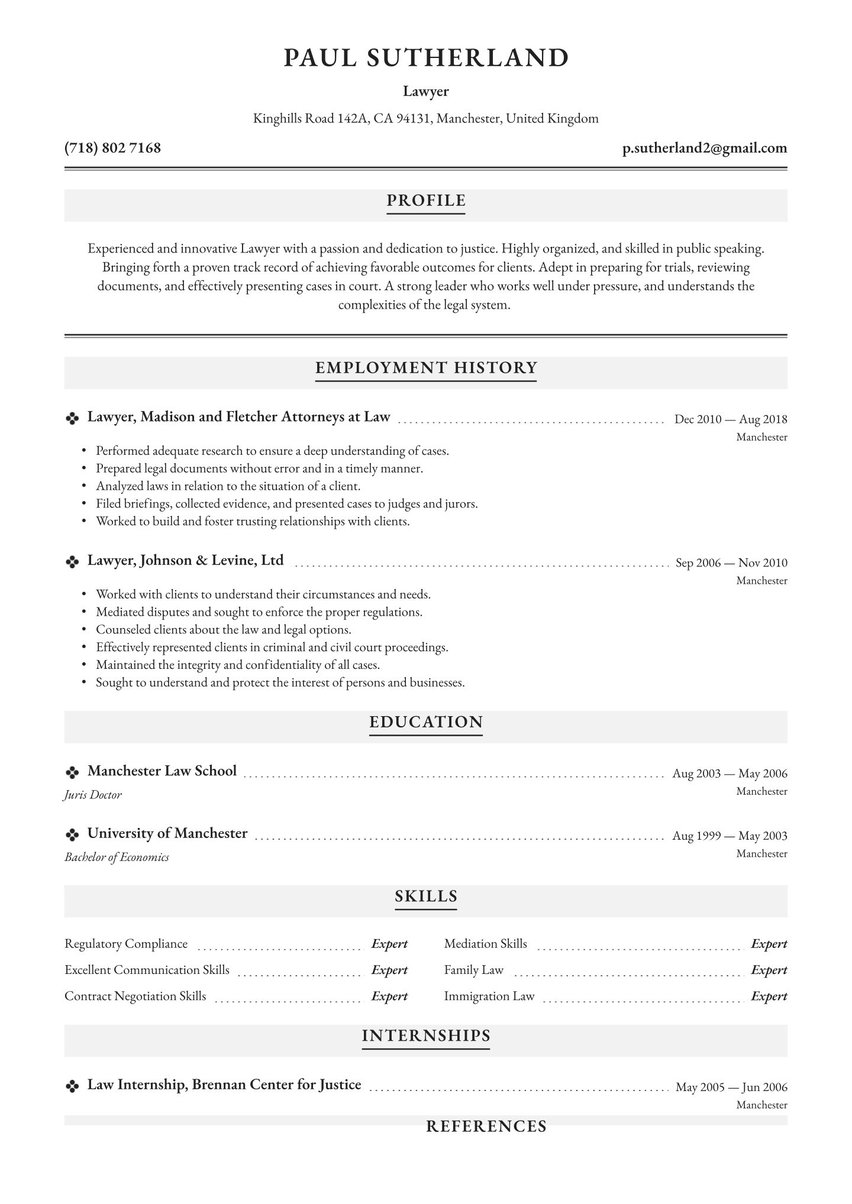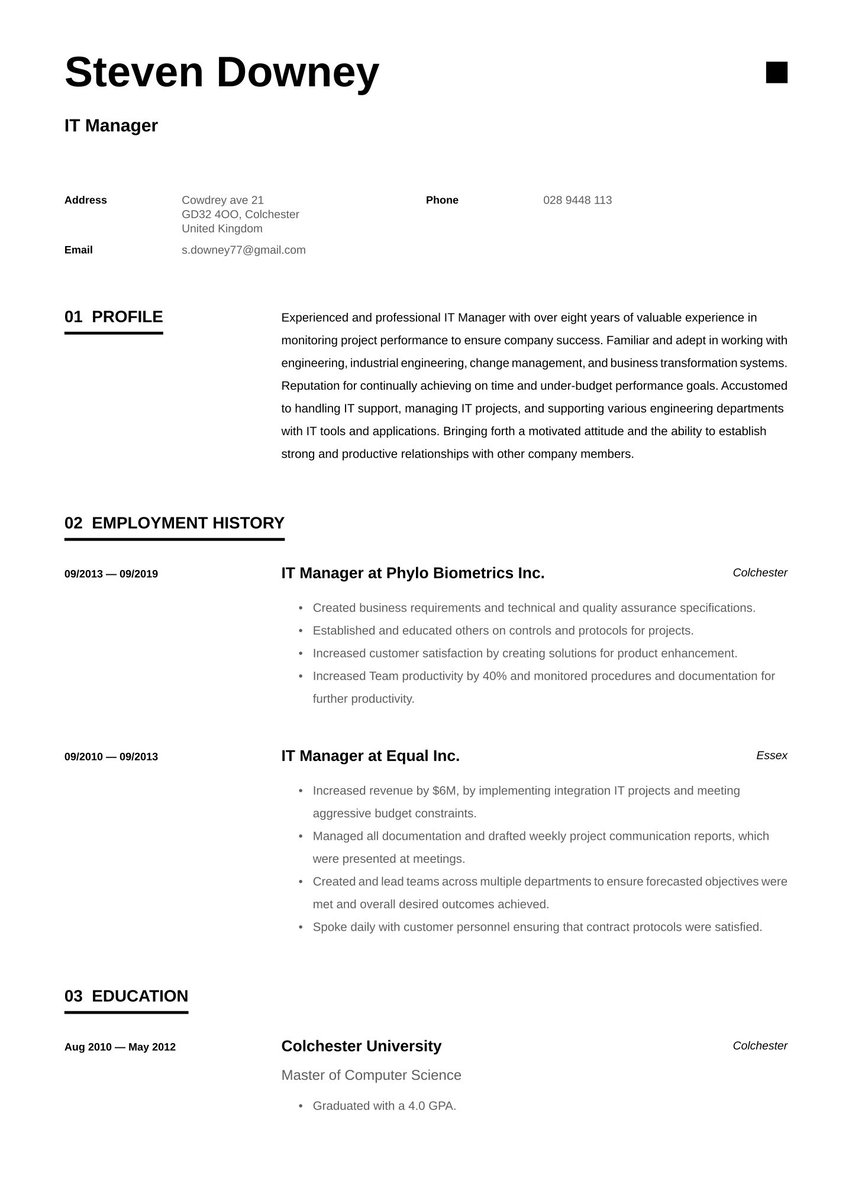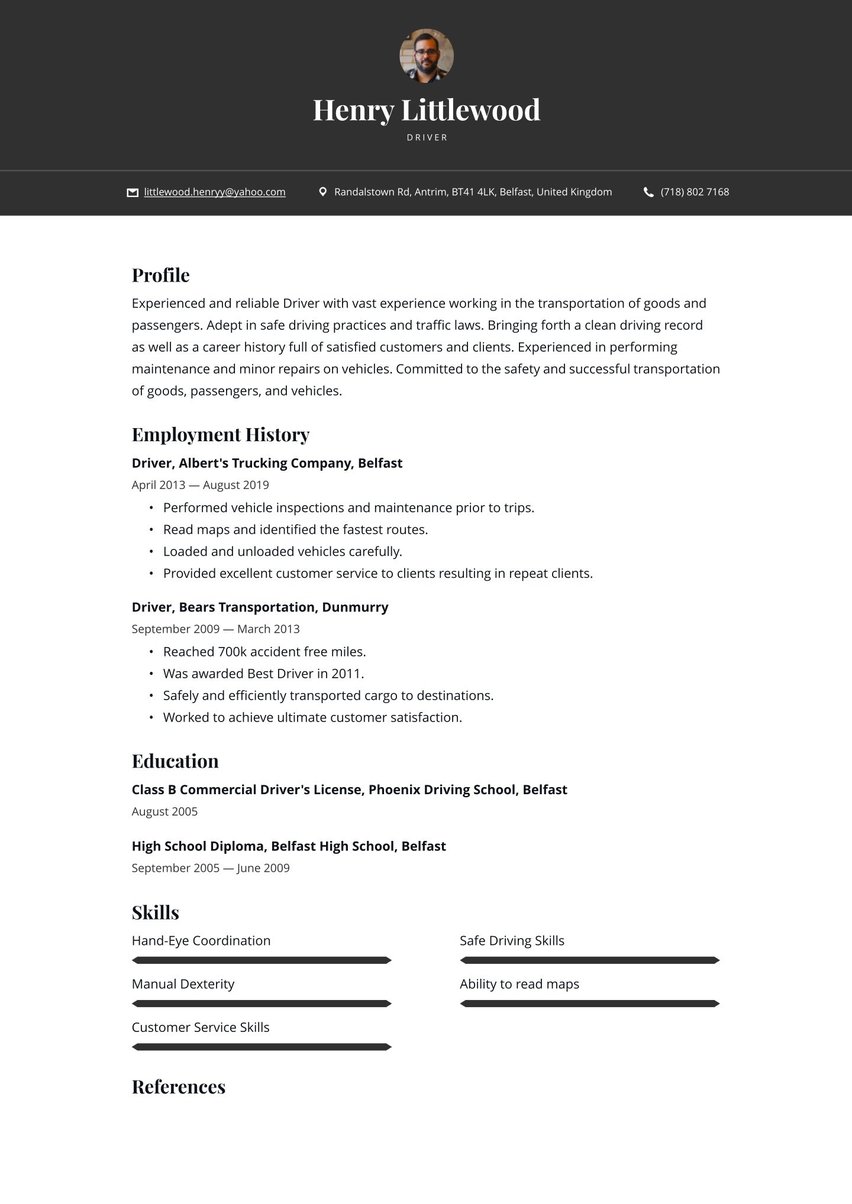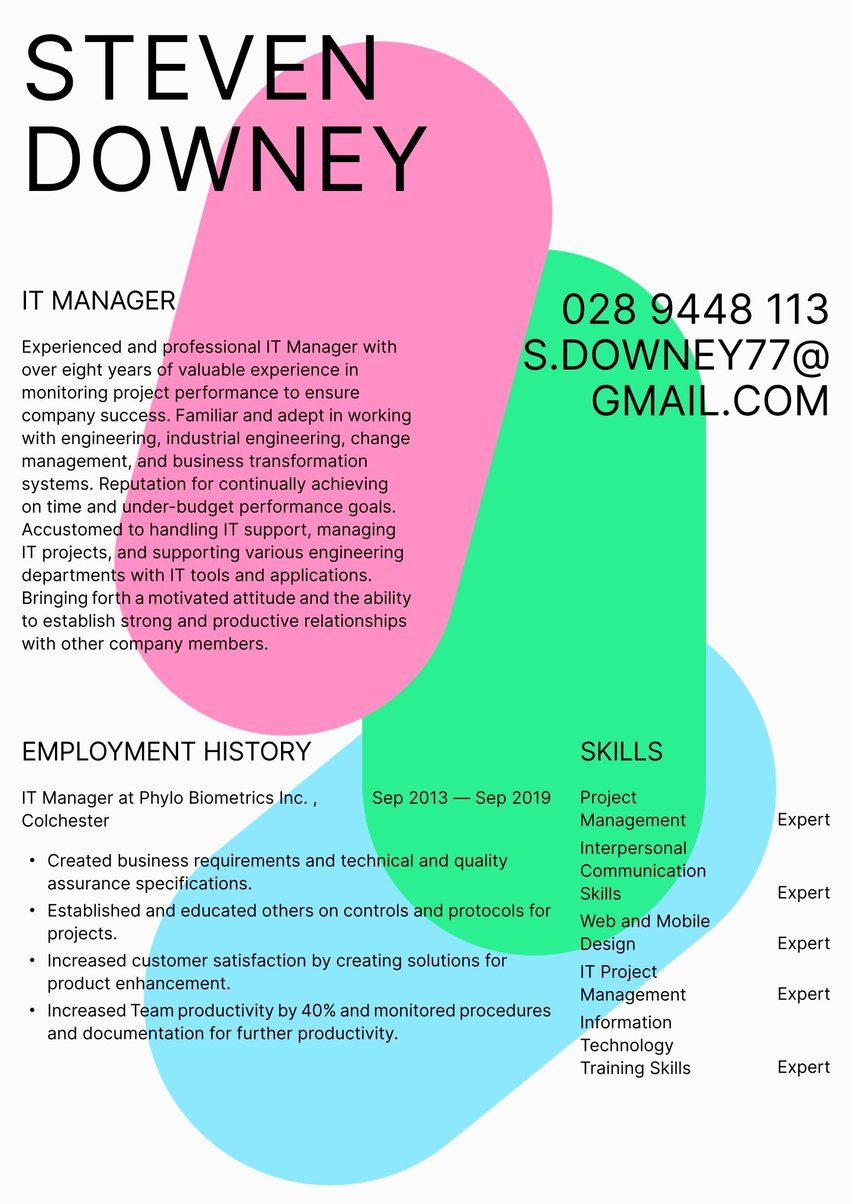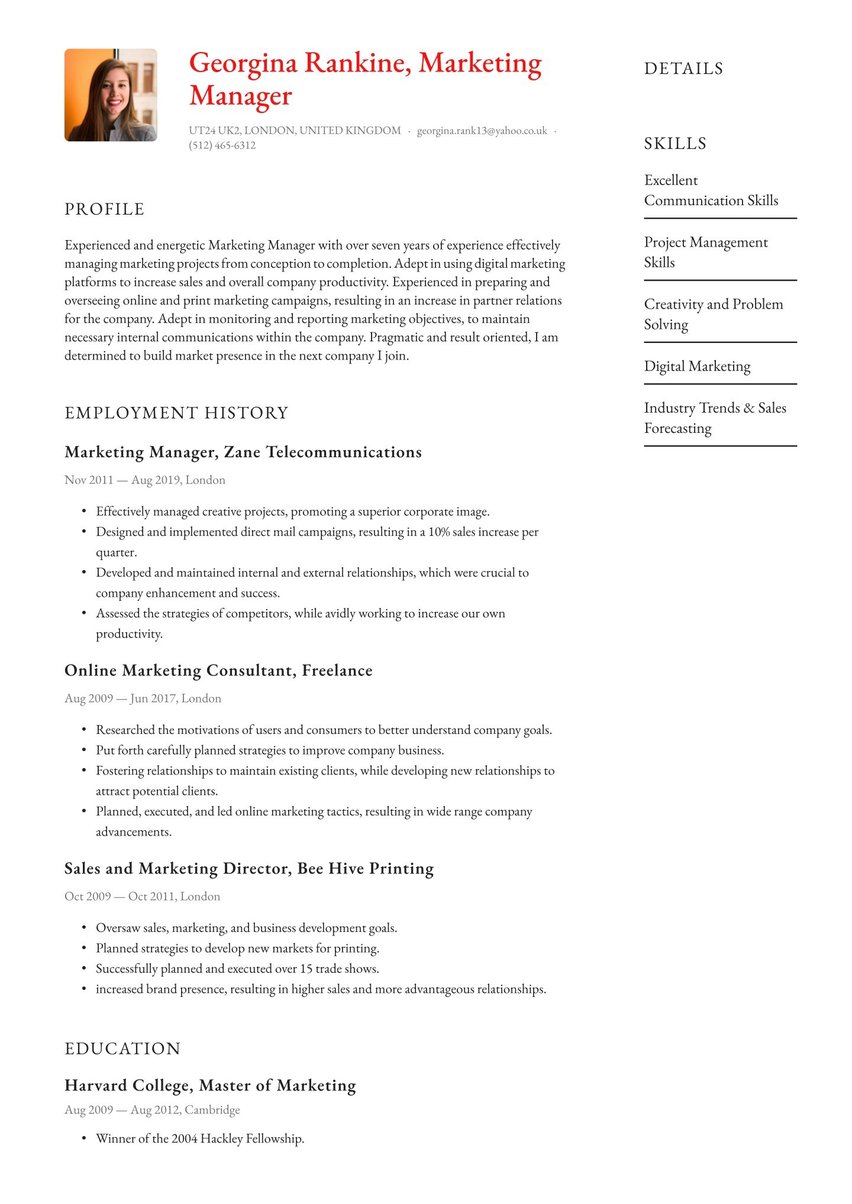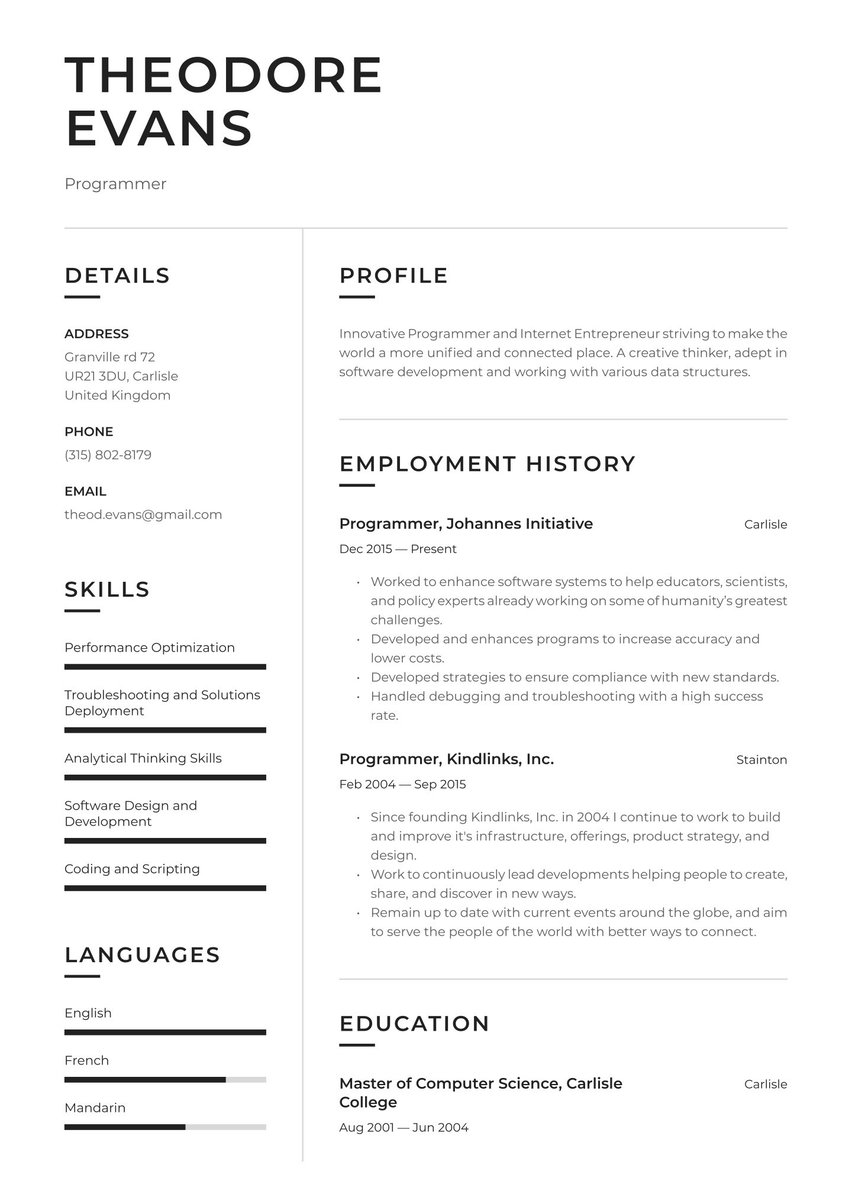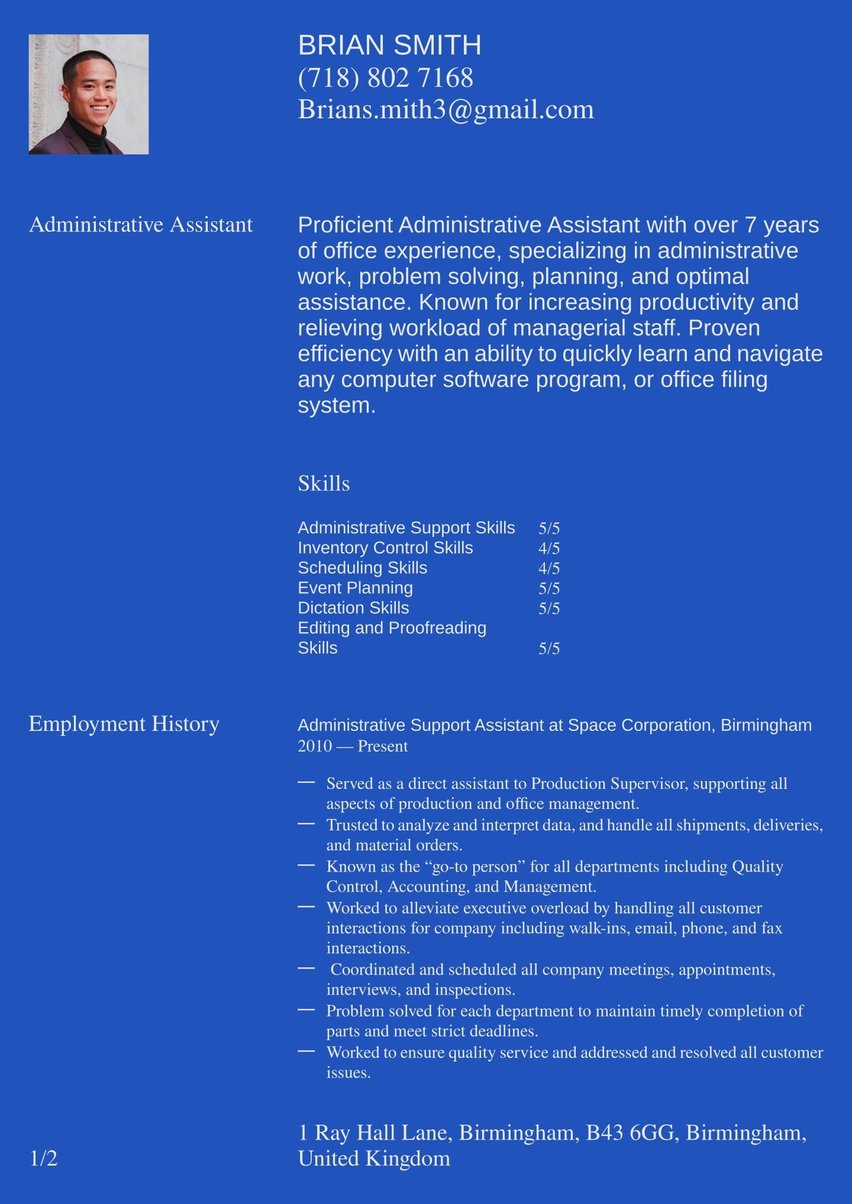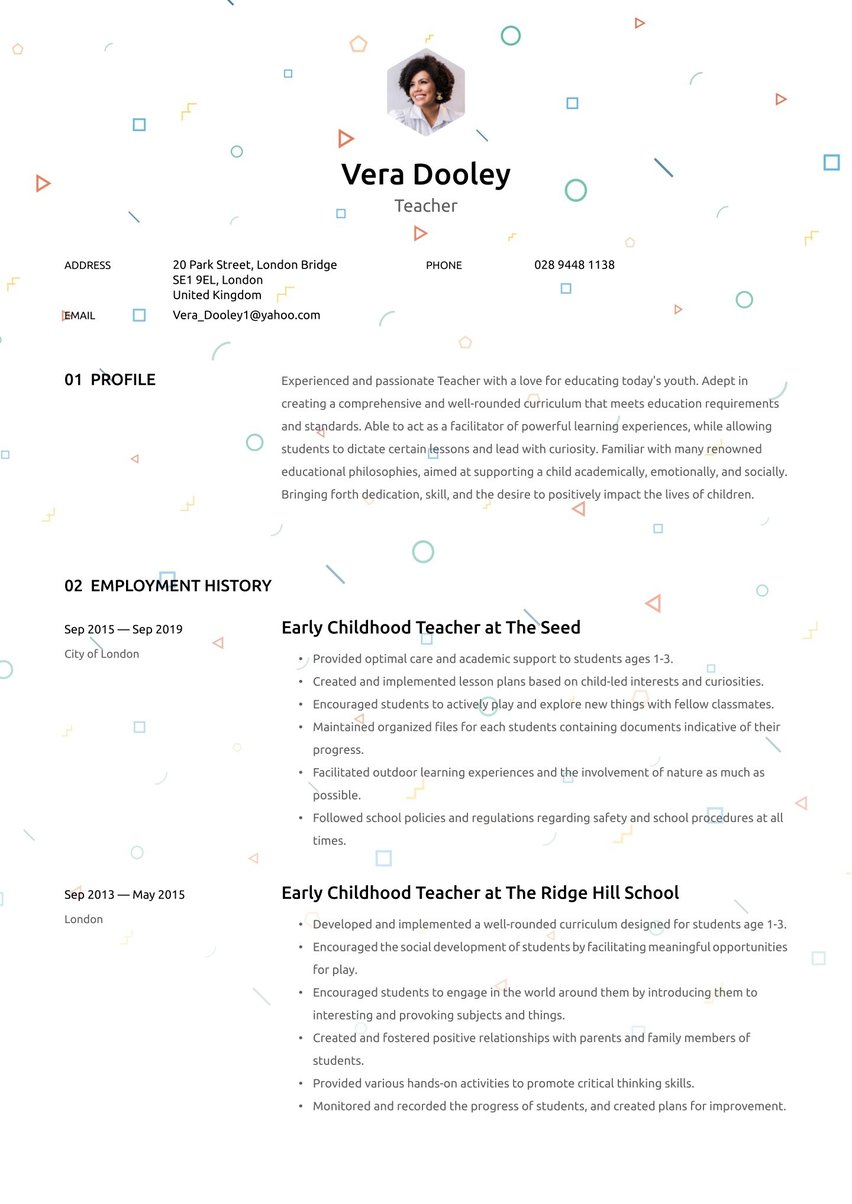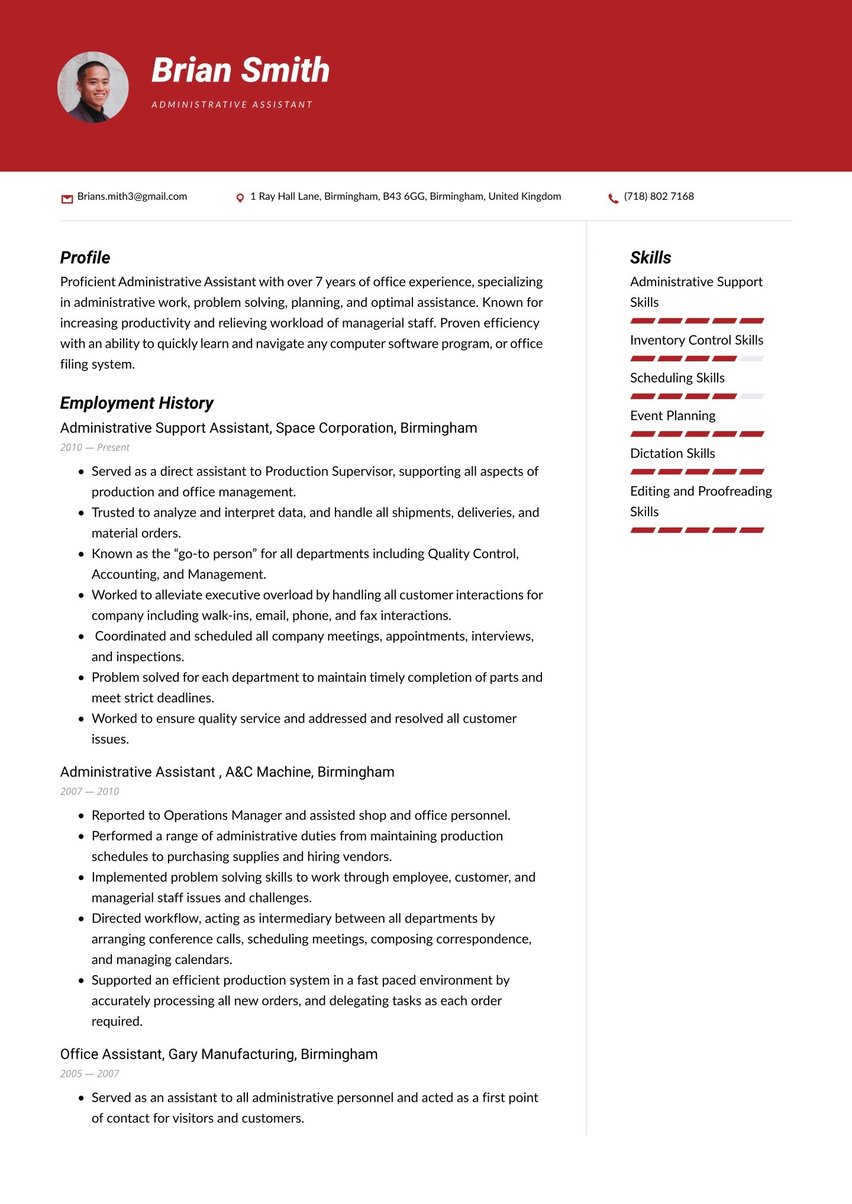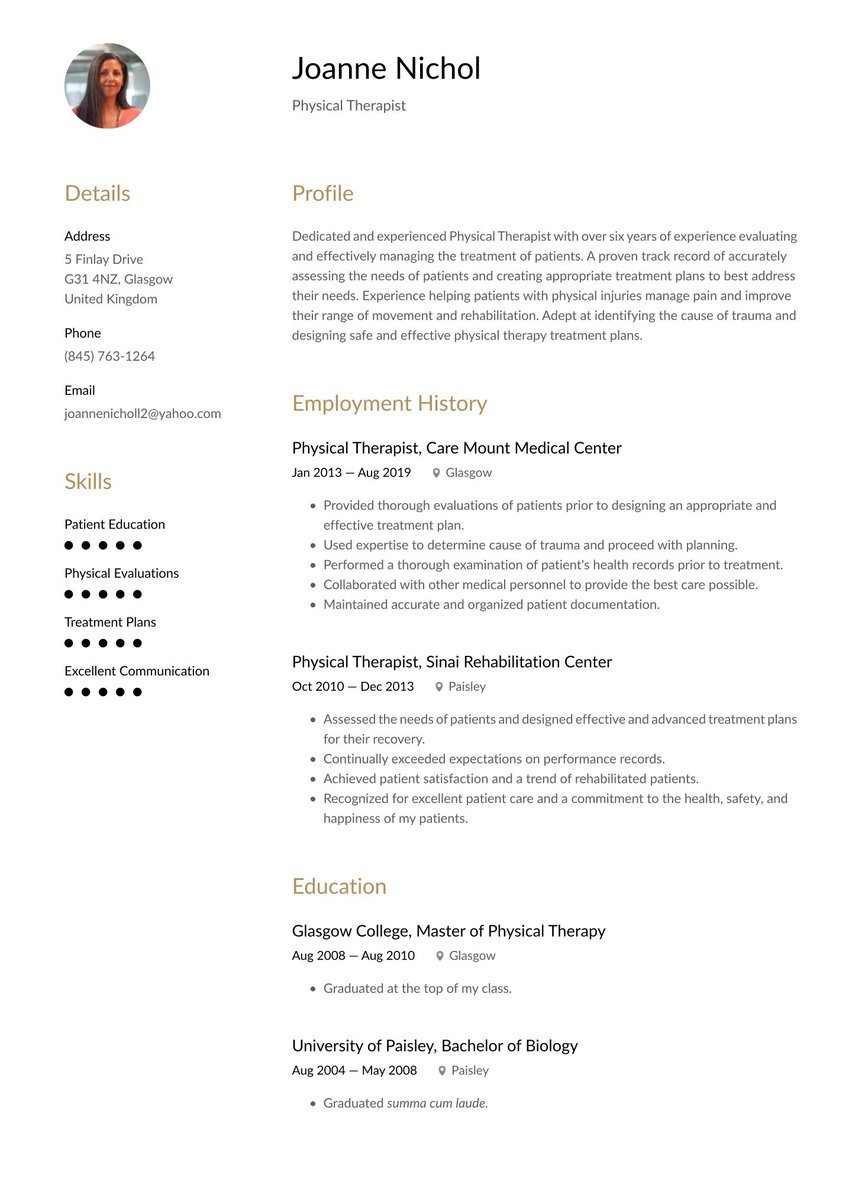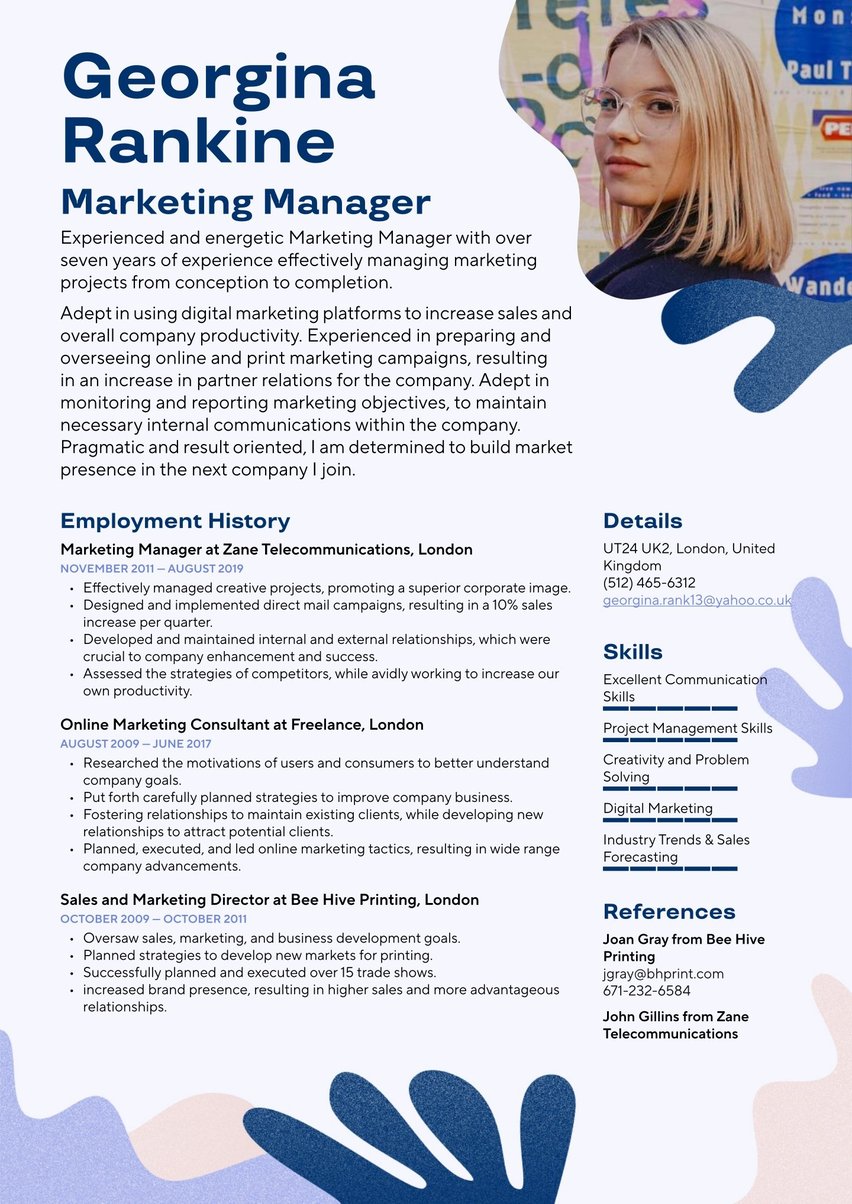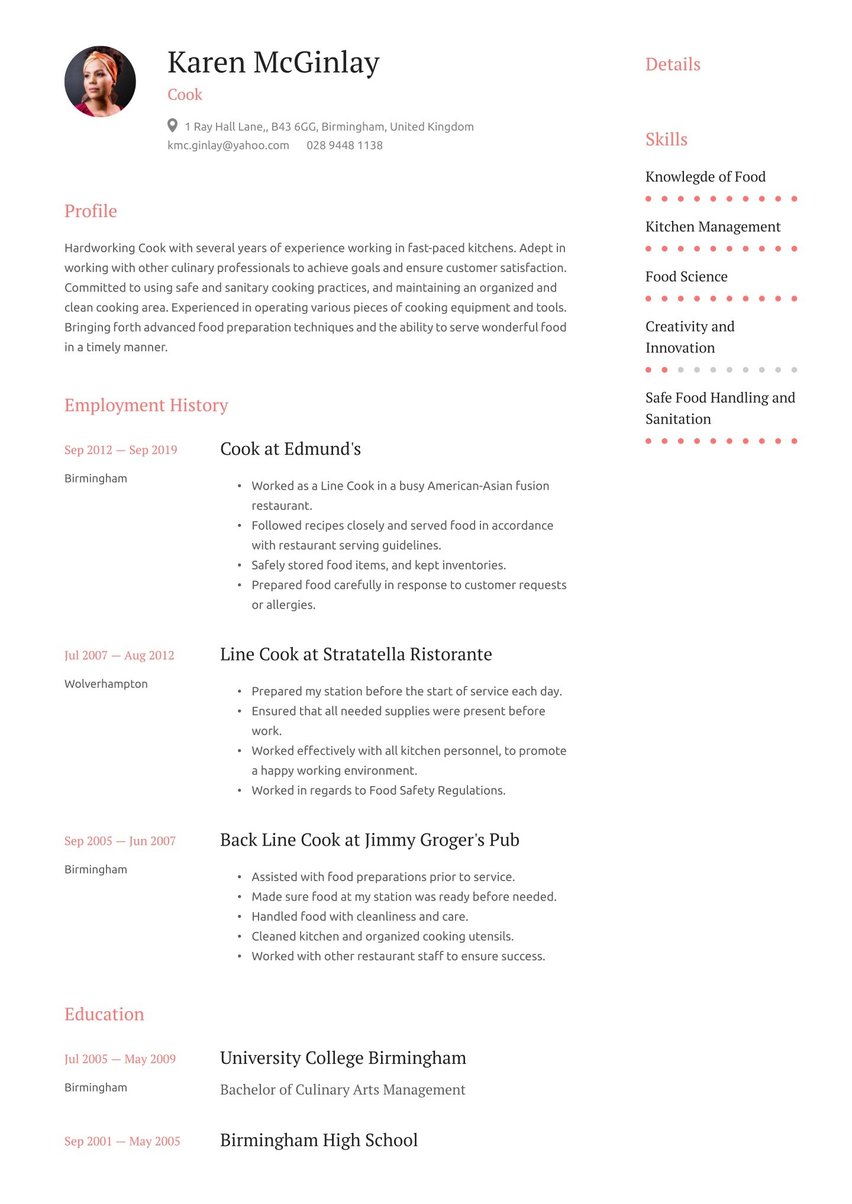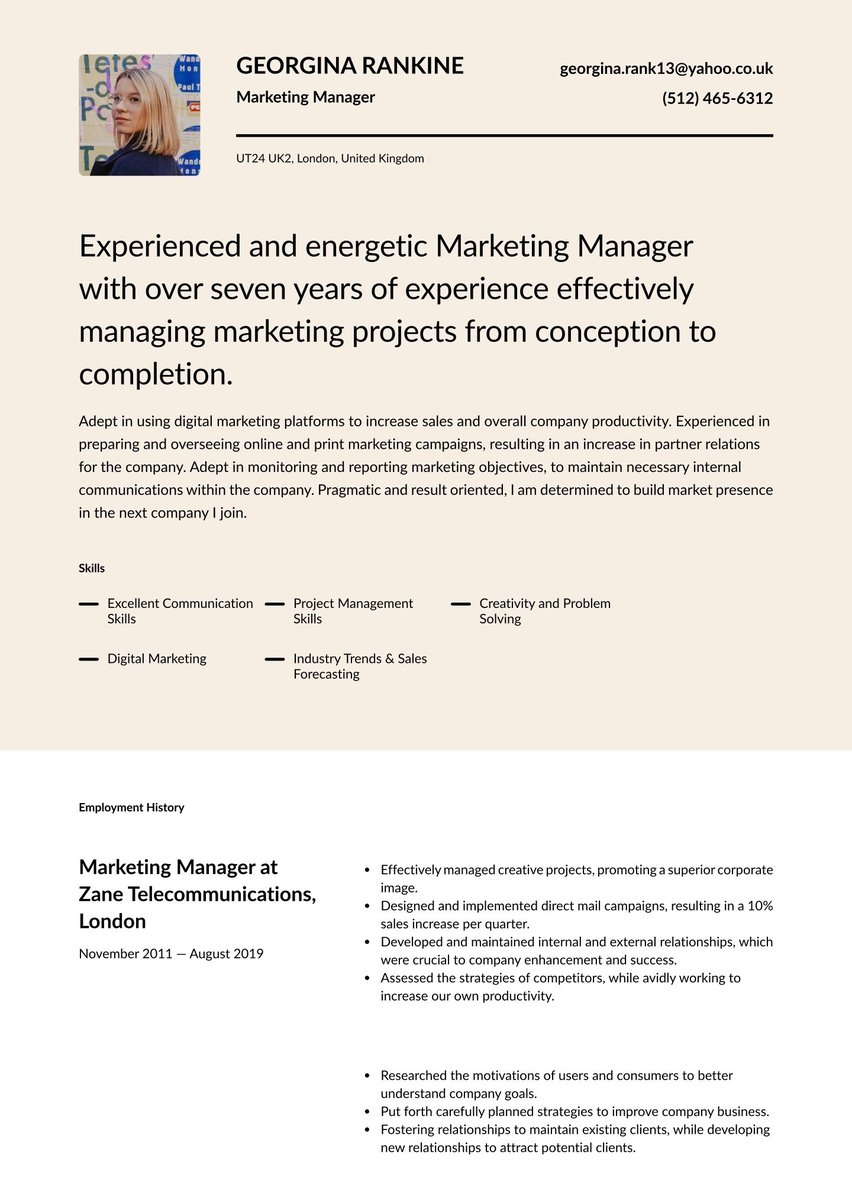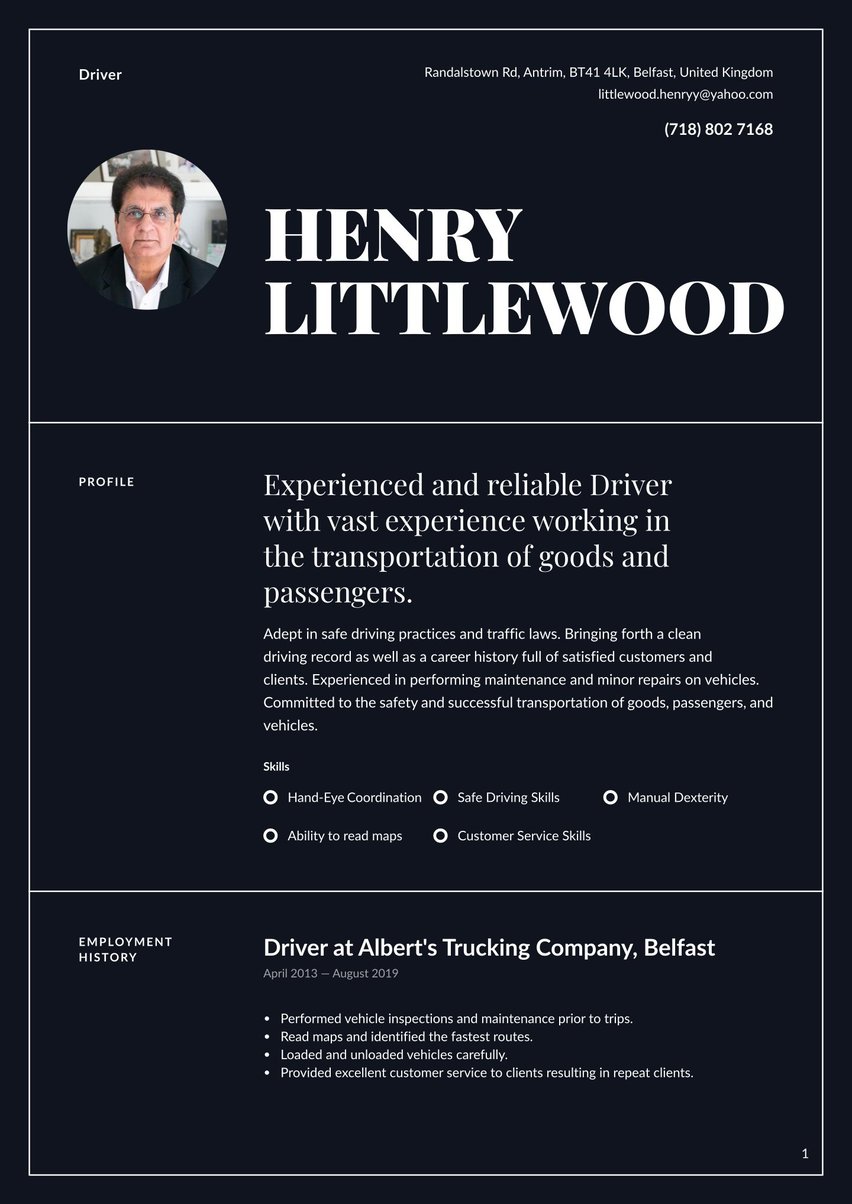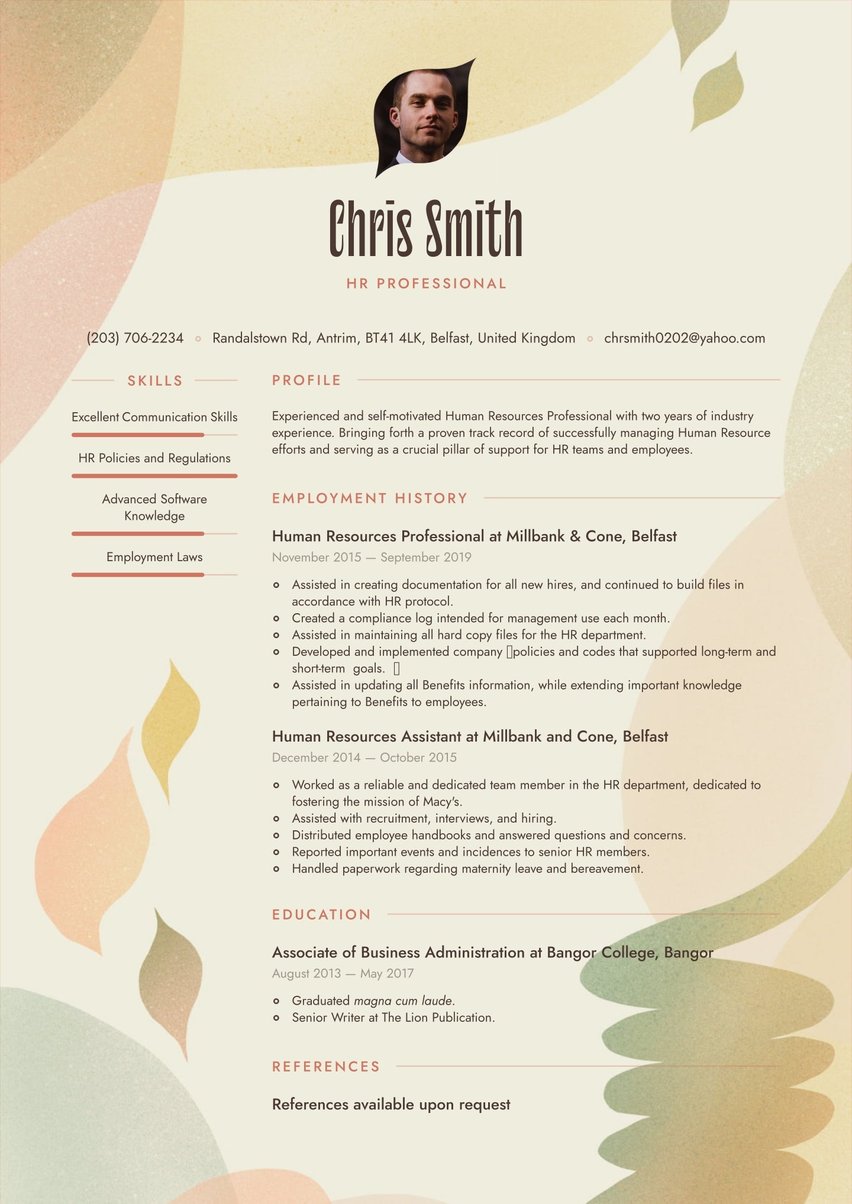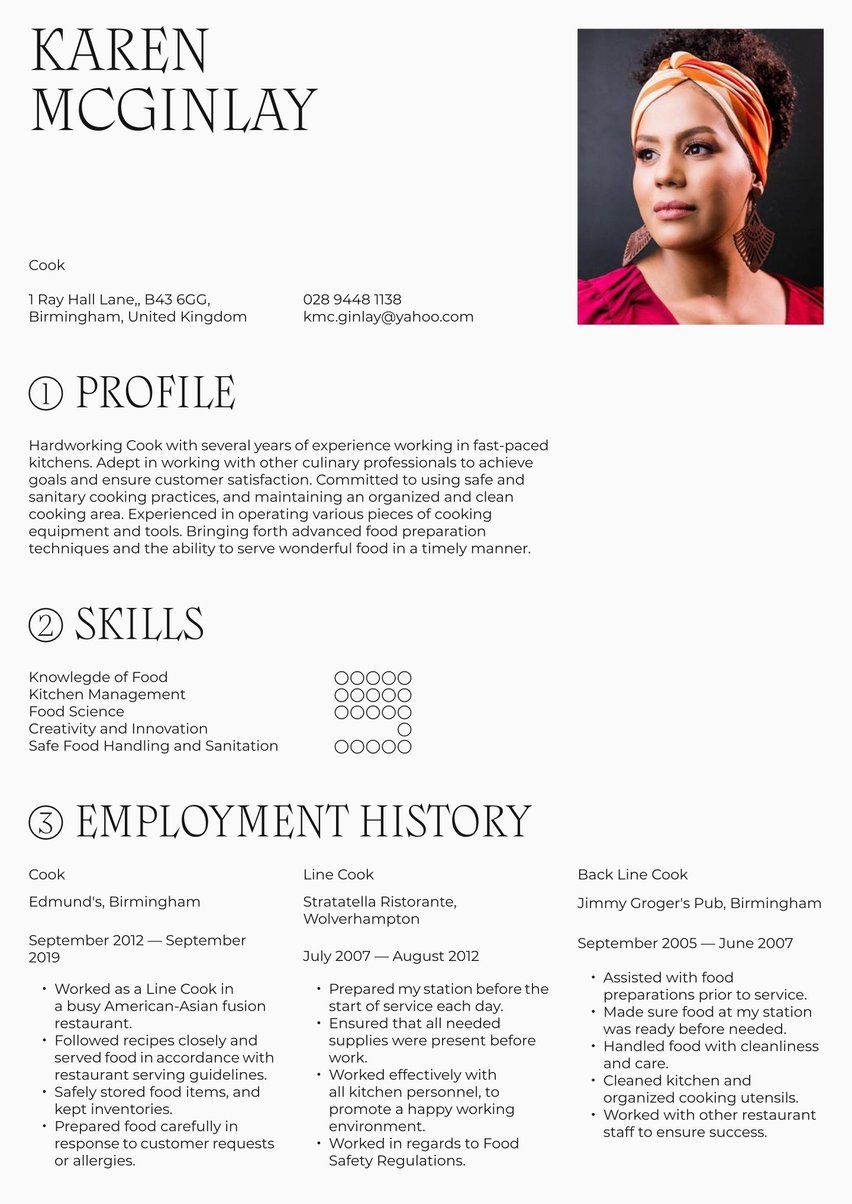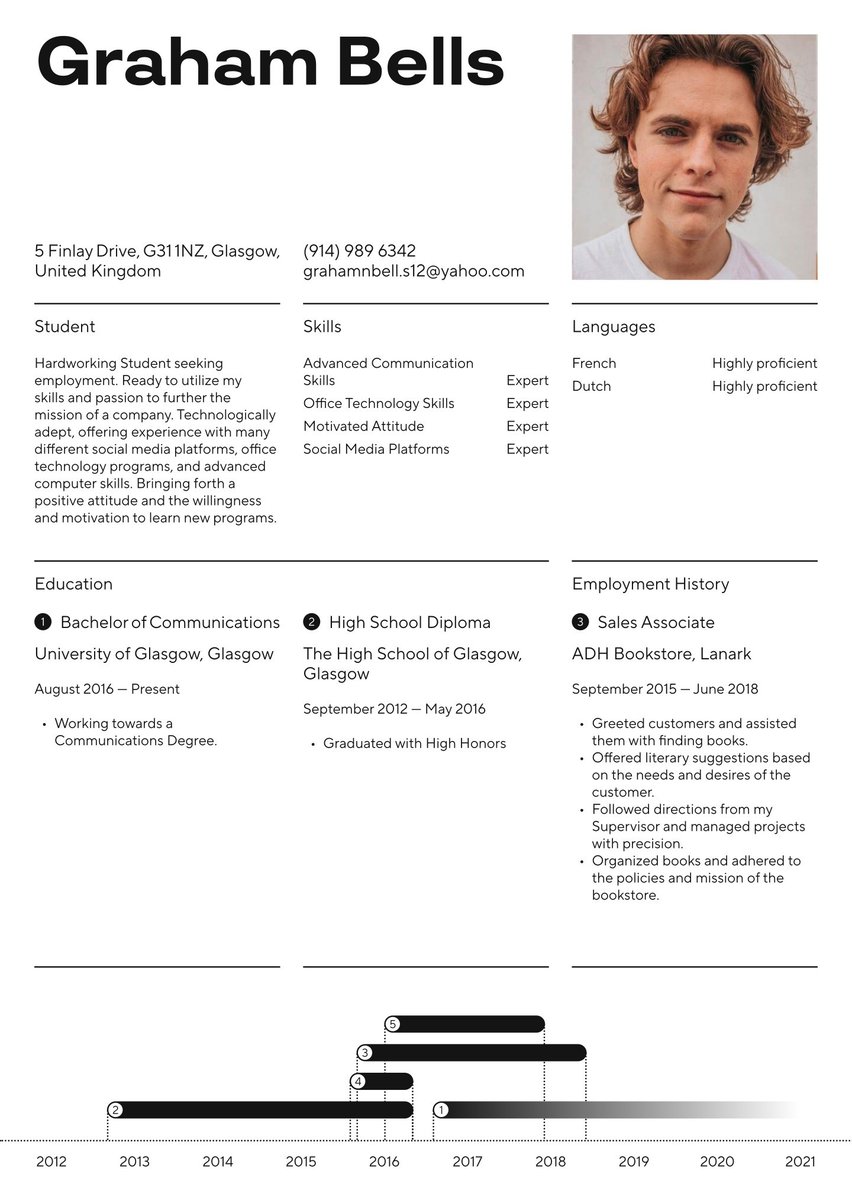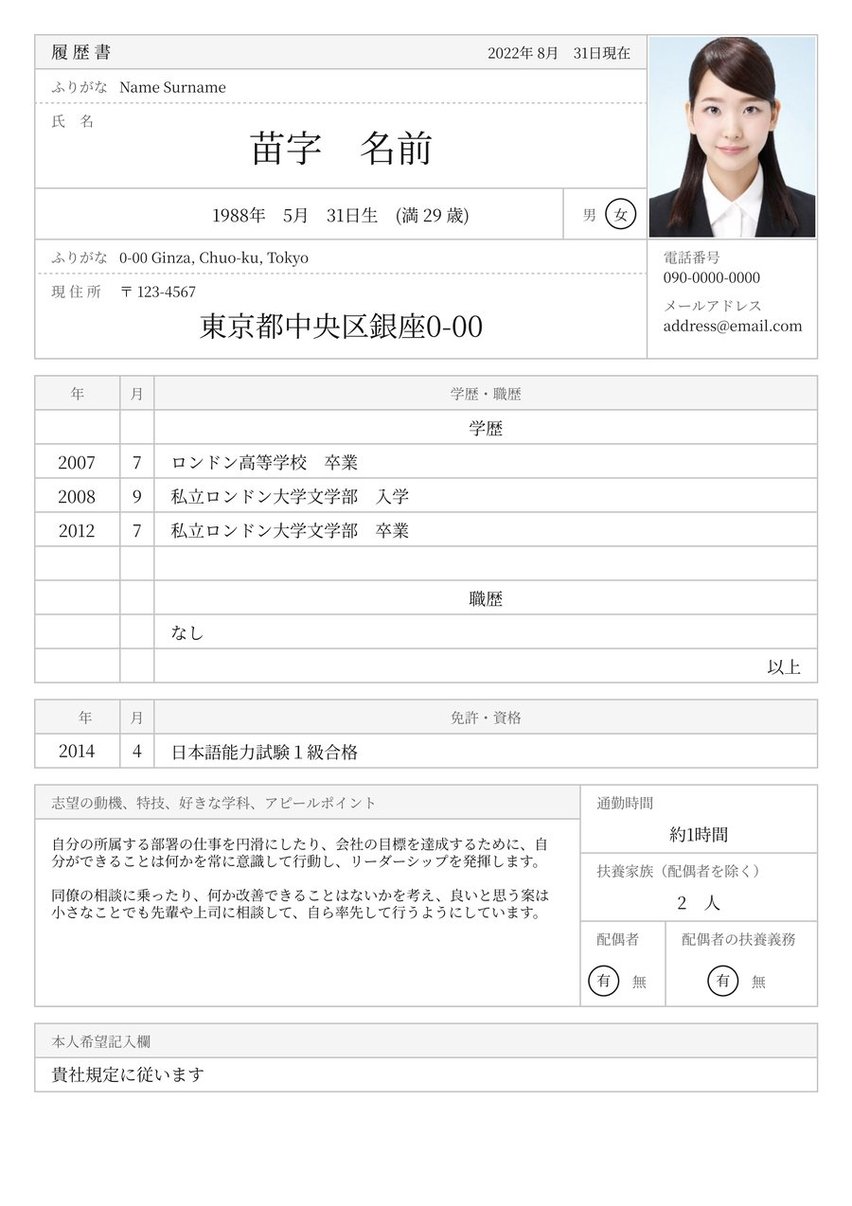Award-winning Graphic Designer with 8+ years’ experience creating powerful visual designs that convert to sales. Skilled in creating digital illustrations and typography. Committed to helping clients shape their brand identity through the use of compelling graphic designs. Accustomed to collaborating with other creative professionals to achieve project goals.
09/2022 - 02/2021, Graphic Designer, First Run Creative , Nottingham
- Worked directly with clients to produce appealing and compelling presentations that engaged target audiences.
- Utilised extensive knowledge of Keynote, PowerPoint, and Adobe Creative Suite.
- Awarded 2023 Graphic Design Brittons Advertising Award for typography created in client campaign.
- Created designs for different campaigns and media platforms.
- Successfully packaged and optimised presentations for ultimate client satisfaction.
05/2015 - 08/2022, Graphic Designer, Outlook Media , London
- Developed a strong working knowledge of our client's brand.
- Worked collaboratively with team members to produce work in an efficient manner.
- Remained committed to producing quality content in accordance with deadlines.
- Worked to ensure that client brand standards were upheld.
- Utilised knowledge of typography, grid systems, and page layout.
09/2011 - 05/2015, Bachelor of Graphic Design, Purchase College , London
09/2007 - 05/2011, A levels, White Plains High School, London
- 3 As in Art, Business Studies, and Information Technology.
- Adobe Illustrator
- Bespoke Typography
- Graphic Design
- Adobe Photoshop
- Effective Time Management
Just like a brochure you bring to life through your design skills, your graphic designer CV should reflect your ability to create something that the hiring manager can’t resist. Easier said than done, right?
Well, maybe not. As a graphic designer, you may have worked on dozens of design formats. However, this format – that is, your graphic designer CV - might not come as naturally to you. That’s completely normal! It’s hard to commit our skills to paper. With limited space to impress the hiring manager, a CV for a graphic designer needs to show off your relevant skills and expertise.
The key is prioritising your time and attention on the bits of your graphic designer CV that count so that you can get that coveted invitation to interview. How? With a CV that knows its audience and encourages employers to take a closer look at what you have to offer.
CV guide for a graphic designer CV
At Resume.io, we create resources to help you land the position you’ve always wanted. Our CV examples, together with a simple CV builder, were designed to make your job search as simple as painting by numbers.
This CV guide and corresponding graphic designer CV example will cover the following:
- How to write a graphic designer CV
- Choosing the right CV format for a graphic designer
- How to add your contact information
- Using summaries
- Adding your graphic designer experience
- Listing education and relevant experience
- Picking the right CV design/layout
- What the graphic design market looks like and what salary you can expect
How to write a graphic designer CV
The very first step in writing your graphic designer CV is understanding what sections to include. Your CV should contain the following elements:
- CV header
- CV summary (aka profile or personal statement)
- Employment history section
- CV skills section
- Education section
Visual communication skills may be your jam, but you must write your CV in a way that appeals to the reader. When it comes to your graphic designer CV, that’s the hiring manager and each one might have different criteria. For instance, the skills you need to work in an agency across multiple client accounts will look very different from working in-house and creating designs for your employer.
Get a feel for the company you are applying to and even the person reading the CV if you are able to figure out who they are on the company website or on LinkedIn.
If you are applying to work in a creative agency, you will probably find that the culture will be more relaxed and informal than if you were applying for a graphic designer role within a large institution, such as a bank. It is a good idea to keep this in mind when writing your CV.
Regardless of the work environment you’re setting your sights on, these are some general rules to keep in mind when writing your CV:
- Tailor your CV to the employer you are applying to; this includes the style and tone. Consider how you would speak to them face-to-face in a work environment, then use stylistically appropriate action verbs to keep the tone right.
- Use a clear, attractive CV template and design. You can let your visual communication skills shine by making sure you match the tone of your prospective employer for maximum effectiveness.
- Don’t forget about the keywords. To make sure your CV makes it past the ATS, the keywords corresponding to the most important skills or experience to the employer must be reflected throughout your CV.
- Focus on what you have accomplished in previous roles instead of your responsibilities alone. Employers will be interested in what you can contribute to a company. What value did you bring to your previous employers? Make it easy for the hiring manager to measure this by highlighting it.
Optimise for the ATS
ATS stands for Applicant Tracking Systems. This algorithmic software scans applicant CVs for keywords and ranks them accordingly. No keyword presence? No interview.
Applications that were not among the top-ranking ones are eliminated and won’t get reviewed by human hiring staff. A quick fix to make it past this screening phase is to identify the keywords in the job description and make sure they’re present in your CV content.
Choosing the right CV format for a graphic designer
The reverse chronological CV format is the best one for most graphic designer CV examples. This means your most recent employment will be listed first. If you don’t have any experience or don't have much experience, then you may want to start with your skills section followed by a shorter employment history section.
You can adapt the format of your CV around based on your level of expertise and the role you are applying for. If you don’t have much experience, then you may find that a functional CV format works better for you. However, if you have been employed before and have a good level of experience, then the reverse chronological format is the one you should aim for.
Don’t be shy about needing a helping hand to get started. There are a variety of CV templates you can choose from that are shown in action among our dozens of job-specific CV examples. Just select the format you think is appropriate and you’re sorted. Design-wise, feel free to get imaginative with a creative layout – you are a graphic designer, after all.
Include your contact information
As a graphic designer, you’re no stranger to the visual hierarchy of information. So making a concise CV header where the hiring manager can find your contact information should be a walk in the park.
Ensure that your CV header’s design fits with the rest of your CV. Most importantly, remember to ensure the following information in this section is clearly legible:
- Full name & title. List your first and last name. You should also include the title of the role you are pursuing.
- Professional email address. Just because your job is creative, it doesn’t mean your email should be too. Employers will expect a clean format like firstname.lastname@gmail.com.
- Phone number. List a number where you can be easily contacted, with a professional voicemail greeting.
- Location. Only list your city. Your full address is no longer necessary. Include 'Willing to Relocate' if applicable.
- LinkedIn. If you have a polished profile on LinkedIn, then feel free to include a link to your profile here, too. Your profile could be the perfect spot to highlight some of your proudest work from your portfolio.
Don’t include:
- Date of birth: This is not necessary, and you could open yourself up to potential age discrimination.
- Personal details: Sensitive information such as your marital status, social security number, and passport number are private and should not be included on your CV.
Sarah Brown
Graphic Designer
07445882361
sarah.brown@email.com
Sarah Brown
Graphic Design Wizard
07445882361
sarahbrown_design&bits83@email.com
Make use of a summary
Your CV tells your story. That is, a story about your professional life so far. You want to make it as interesting to the reader as possible. Every great story has a great opening, and in this case, that is your CV summary.
This is the section where you state your level of expertise and why you are the right person for the job. The summary only needs to be a couple of concise sentences, with the most relevant aspects of your experience and skills.
There is a specific style to CV writing, so consider some of these CV summary writing tips. Avoid using pronouns such as “I” or include your name when writing on your CV. For instance, you can write "Experienced graphic designer with 5 years working in creative agencies". On the other hand, you would avoid writing "I am an experienced graphic designer," or "John is an experienced graphic designer." The last two don’t get to the point as quickly, and the truth is that hiring managers won’t have time to spare when reading.
Don’t be afraid to blow your own trumpet when writing your CV summary. Hiring managers want to hire people who are confident in their abilities, as they want to be able to trust that they can leave their work in your safe and capable hands. So, make sure you make every word in those brief sentences count.
As the summary asks you to do some freeform writing, you might be a bit lost for ideas on where to get started. We would suggest looking at some of our examples for inspiration. For instance, our
You can also find adaptable graphic designer CV example summaries below:
Highly creative graphic designer seeking to expand expertise in the field. Expert knowledge of industry-standard design software including InDesign, Illustrator, and Photoshop. Committed to gaining further experience in the technology field and achieving clients’ design objectives.
Motivated Graphic Designer and team player with 5+ years of experience. Experienced in translating complex visual design briefs to meet the needs of target audiences in the medical field. Accustomed to collaborating with other creative professionals to achieve project goals. Looking to use my skills to help multiple clients in a creative agency.
Award-winning Graphic Designer with 8+ years of experience creating powerful visual designs that convert to sales. Skilled in creating digital illustrations and typography. Committed to helping clients shape their brand identity through the use of compelling graphic designs. Accustomed to collaborating with other creative professionals to achieve project goals.
Outline your graphic designer work experience: curate your personal brand
You should list your work experience in graphic design in reverse chronological order, which means that you start with your most recent job and work your way backward. To stop your CV from becoming too long, you can keep your employment history to around 10 years.
You should state the name of the employer and your job title with bullet points outlining your main responsibilities and achievements. You don’t need to write every aspect of the role, just stick to the most relevant. These are usually the points that incorporate keywords from the job specification.
Action verbs are the most appropriate when writing your bullet points underneath each role:
- “Pitched marketing campaign concepts."
- "Designed social media marketing assets.”
- “Created a landing page that increased clickthrough rates.”
It is always good to support your employment with notable successes. Think about mentioning any popular brands or specific campaigns that the hiring manager might have heard of. Your CV instantly appears more attractive if you can illustrate your abilities.
This means making sure there are specific examples of your accomplishments, alongside name-dropping. While your job may not involve quantifying data, this is what it takes to craft a job-winning CV. Of course, employers will be impressed by who you’ve worked with but they’ll be even more impressed by how you helped contribute positively in those positions.
Consider these adaptations of the previous examples:
- “Pitched award-winning [insert popular brand here] marketing campaign concept."
- "Designed social media marketing assets that increased engagement by 120%.”
- “Created a landing page that doubled clickthrough rates.”
If you’re a freelancer, highlighting the results you can help your clients to achieve is even more important. Prospective clients need to understand from the get-go why they should put their trust in your services. With that in mind, double down on the specificity and show them your results, don’t just tell.
For ideas on what your graphic designer employment history should look like, take a look at the sample below.
Graphic Designer at First Run Creative , Nottingham
September 2022 - Present
- Worked directly with clients to produce appealing and compelling presentations that engaged target audiences.
- Utilised extensive knowledge of Keynote, PowerPoint, and Adobe Creative Suite.
- Awarded 2023 Graphic Design Brittons Advertising Award for typography created in client campaign.
- Created designs for different campaigns and media platforms.
- Successfully packaged and optimised presentations for ultimate client satisfaction.
Graphic Designer at Outlook Media , London
May 2015 - August 2022
- Developed a strong working knowledge of our client's brand.
- Worked collaboratively with team members to produce work in an efficient manner.
- Remained committed to producing quality content in accordance with deadlines.
- Worked to ensure that client brand standards were upheld.
- Utilised knowledge of typography, grid systems, and page layout.
How to write a graphic design CV with no experience
Everyone has to start from somewhere. If you're just starting to build your portfolio as a graphic designer and have no previous professional experience, all hope is not lost. Here are some tips to consider when building your very first graphic design CV:
- Lean into transferable skills. You will have a list of useful skills already from life experience, other part-time jobs, or your education.
- List industry qualifications. This will help you to build up your education section if you have come into the field using a route other than a well-known educational qualification.
- Highlight other experience. While you may not have professional work experience yet, you can fill the corresponding section of your CV with experience gained from personal projects or school projects.
Consider linking to a portfolio
A graphic design professional is only as good as their most recent designs. Why not include a link to a curated portfolio of relevant designs on your CV? Platforms like Behance, a personal website, or even social media platforms like Instagram or LinkedIn are simple ways to create yours online.
If you don't have any professional work under your belt yet, you can use personal projects, college projects, and more to make yours.
Include the relevant key skills that make you a great graphic designer
The skills section of a graphic designer's CV is of the utmost importance. The job specification will state the required skills for the role. More specifically with a graphic designer role, it will mention the relevant software packages, such as the Adobe Creative Suite or Figma.
Companies will no doubt have specific software packages in place, and therefore, you will need to be experienced in using them. These are what you can consider to be your hard skills, alongside any other qualifications or training you hold.
A good rule of thumb is that you should have a good mix of hard skills and soft skills. Some soft skills you could choose to include are:
- Collaboration. Whether you’re freelance or in-house, there may be revisions required and a lot of team effort, which means you need to be a team player.
- Communicating with stakeholders. This goes beyond working well in a team internally. Experience in successfully listening to and expressing your ideas to clients or other stakeholders will instantly make your profile look more serious.
- Working independently. You may have deadlines that you and only you are responsible for meeting. That means you need to be good at being your own cheerleader to banish procrastination and get the job done.
- Creative problem-solving. In addition to your visual expertise, design requires problems to be solved in a multitude of ways. It’s worth finding a way to word this that just justice to your complex skillset.
Remember, aside from the hard skills that will be relevant for every graphic designer job you apply for, you can pick and choose when it comes to selecting the soft skills you include on your CV. With a limited amount of space, your priority should be choosing the ones that tick the boxes of hiring managers.
Figuring out what those are means you need to read through the job description carefully and tweak your CV accordingly. While it may seem like a lot of effort to put in for every job application, it really comes down to prioritising quality over quantity if you want to get the job of your dreams.
Take a look below at what your graphic designer CV skills section could look like.
- Adobe Illustrator
- Bespoke Typography
- Graphic Design
- Adobe Photoshop
- Effective Time Management
Detail your education & relevant graphic designer certifications
A degree or college diploma is not always necessary to secure a role as a graphic designer. However, it helps if you have had some kind of training, as graphic design can be quite complex. When it comes to listing your awards, certifications, and qualifications you’ll need a subheading for each one.
Qualifications you may have undertaken could include:
- National school or college certifications: A levels or Btecs in a creative or IT-related subject
- Diplomas: An art foundation diploma
- University Qualifications: A Bachelor of Arts degree in a creative or marketing field like communication design, art, illustration, or graphic design.
- Other industry credentials: Adobe Certified Professional certificate or similar.
Your subheading should start with the name of the qualification and be followed by the institution you studied it at, your dates of attendance, and its location.
As a graphic designer, you may have been trained on certain software. If that’s the case, make sure you mention it in this section. Feel free to include online workshops or other additional courses you’ve taken that you feel are relevant. They could also help your CV stand out.
Take a look at our graphic designer CV sample education section for more ideas on how to write yours.
Bachelor of Graphic Design, Purchase College , London
September 2011 - May 2015
A levels, White Plains High School, London
September 2007 - May 2011
- 3 As in Art, Business Studies, and Information Technology.
Pick the right CV layout and design for a graphic designer CV
The content of your CV is the priority for securing an interview for a graphic designer role. However, you should also pay close attention to its layout and design. There is no need to make your CV sample’s design too creative, even if your artistic spirit is telling you otherwise.
Design is about problem-solving. The problem to solve in this case? Getting the message of your professional prowess across in a visually appropriate way. The important thing is that your CV layout is clear, concise, and easy to read. This is the case from the headings and bullet points that divide your CV into the fonts and colour scheme you select.
Refrain from adding images and don’t go crazy with the colours. Less is sometimes more, and this is usually true of a professional CV. Hiring managers simply don’t have time to spend figuring out how to read wacky CV styles. They usually just scan them for the key aspects before moving on to the next, so a simple layout is usually the best way to go.
Design is your field of expertise, but it’s often the most difficult when you start using your skills for your own benefit. If you'd like to take the pressure off, then take a look at our field-tested CV templates.
Graphic designer job market and outlook
In the UK, graphic designers and the skills they provide are in demand. With visuals becoming more important on websites and social media platforms, the need for top quality visuals is likely to increase in future years.
In terms of career progression, as you gain experience, you can expect to move up the career ladder into more senior positions such as a senior designer or a creative director. Alternatively, you could even choose to move into management.
What type of salary you can expect in graphic design
With a working week of around 37 to 40 hours, including occasional evenings, graphic designers in the UK can expect to earn anywhere between £18,000 to £35,000 a year. Like most professions, the more experience you have under your belt, the higher your salary is likely to be.
Graphic designer CV, text only
Profile
Award-winning Graphic Designer with 8+ years’ experience creating powerful visual designs that convert to sales. Skilled in creating digital illustrations and typography. Committed to helping clients shape their brand identity through the use of compelling graphic designs. Accustomed to collaborating with other creative professionals to achieve project goals.
Employment history
Graphic Designer at First Run Creative , Nottingham
September 2022 - Present
- Worked directly with clients to produce appealing and compelling presentations that engaged target audiences.
- Utilised extensive knowledge of Keynote, PowerPoint, and Adobe Creative Suite.
- Awarded 2023 Graphic Design Brittons Advertising Award for typography created in client campaign.
- Created designs for different campaigns and media platforms.
- Successfully packaged and optimised presentations for ultimate client satisfaction.
Graphic Designer at Outlook Media , London
May 2015 - August 2022
- Developed a strong working knowledge of our client's brand.
- Worked collaboratively with team members to produce work in an efficient manner.
- Remained committed to producing quality content in accordance with deadlines.
- Worked to ensure that client brand standards were upheld.
- Utilised knowledge of typography, grid systems, and page layout.
Skills
- Adobe Illustrator
- Bespoke Typography
- Graphic Design
- Adobe Photoshop
- Effective Time Management
Education
Bachelor of Graphic Design, Purchase College , London
September 2011 - May 2015
A levels, White Plains High School, London
September 2007 - May 2011
- 3 As in Art, Business Studies, and Information Technology.
Key takeaways for a graphic designer CV
To land the graphic designer job you’re after, make sure you tailor your CV to suit the company you are applying for. That includes how you include keywords throughout your CV! By focusing on key skills and experience and how they match what the hiring manager is looking for, you’ll be more likely to catch their attention. Name-dropping an important client or two never hurts, either!
Finally, show that the proof is in the pudding with a simple and clear visual CV layout. Our online CV builder can help to streamline your CV writing process, so don’t hesitate to check it out if you want some extra guidance.

